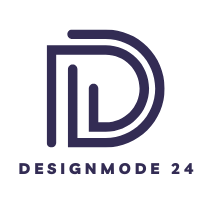In the vast digital labyrinth of keywords and search trends, some phrases emerge seemingly out of nowhere, sparking curiosity and intrigue. One such enigmatic keyword is “Memo Amp March DJScarmanBloomberg.” At first glance, it looks like a random jumble of words, but as we dig deeper, it reveals an opportunity to explore modern digital culture, the power of memos, the amplification of ideas, and how they march through various platforms.
This article unpacks the elements of this curious phrase, breaks down its possible meaning, and connects the dots to its broader implications in a digitally driven world.
The Power of the Memo
A memo is one of the most fundamental communication tools in organizational and cultural settings. Short for “memorandum,” it carries directives, updates, or records to individuals or groups. While the medium may appear old-fashioned in an era of instant messaging and video calls, the memo has seen a resurgence in new forms.
In the business world, memos shape narratives, set priorities, and influence decisions. Tech companies like Amazon and Google, for example, rely heavily on well-structured internal memos to share new strategies or evaluate projects. These memos become blueprints, driving the next big thing in their industries.
Memos have transcended the corporate boardroom, becoming a format for public communication. Think of whistleblower memos or thought-provoking open letters that spark global conversations. In these contexts, a memo isn’t just an update—it’s a call to action or an invitation to reflect.
Amp: Amplification in the Digital Age
The word amp brings to mind the concept of amplification—making something louder, more significant, and, in this case, more influential. In digital contexts, amplification occurs when a piece of content—be it a memo, idea, or story—gains traction across platforms, reaching audiences far beyond its original scope.
Social media plays a pivotal role in this process. Platforms like Twitter, LinkedIn, and Instagram are the megaphones that amplify ideas. For example:
- A whistleblower memo shared internally might leak onto Twitter, where it gets picked up by journalists and thought leaders.
- A company memo introducing a groundbreaking technology might become a trending topic on LinkedIn, driving conversations among professionals.
- A simple personal note can even go viral, sparking global movements (e.g., #MeToo).
Amplification isn’t just about volume; it’s about resonance. Content gets amplified because it strikes a chord with the audience, aligning with their interests, beliefs, or emotions.
March: The Movement of Ideas
The next piece of the puzzle is march. This evokes the image of a purposeful movement, often associated with activism, change, or progress. When memos and amplified messages align with collective sentiment, they transform into marches—campaigns or movements that rally people around a cause.
Consider some of the most impactful marches in history:
- The civil rights marches of the 1960s started as ideas and memos within small communities but grew into nationwide movements amplified by media.
- Modern digital campaigns like Black Lives Matter or Fridays for Future begin with simple messages but march forward through hashtags, shared posts, and coordinated efforts.
In this context, “march” isn’t limited to physical demonstrations. It’s the momentum of ideas that gather pace, driven by people’s collective will and the platforms that connect them.
DJScarmanBloomberg: A Fusion of Influences?
The last piece of the keyword, DJScarmanBloomberg, appears to be the most puzzling. It seems to fuse elements of modern pop culture, legal history, and finance. Let’s break it down:
DJ: The Voice of Culture
In today’s world, DJs are more than just music mixers—they are curators of culture. DJs select, blend, and remix sounds to create new experiences for their audience. Similarly, in the digital space, the role of a DJ can symbolize anyone who curates and amplifies content, shaping how people consume information.
From a marketing perspective, influencers and content creators are the DJs of the modern era, setting trends and remixing ideas to keep them fresh and engaging.
Scarman: The Legal Connection
The name Scarman may refer to Lord Leslie Scarman, a prominent British judge known for his progressive stance on social reform. His work emphasized the importance of equality, justice, and addressing systemic issues.
Incorporating “Scarman” into this keyword may suggest a nod to principles of fairness and the role of legal frameworks in driving societal change. In movements like climate action or economic reform, legal memos and policies often become the backbone of broader campaigns.
Bloomberg: The Economic Lens
The final part, Bloomberg, brings to mind the globally recognized financial media company and former New York City Mayor Michael Bloomberg. Bloomberg is synonymous with finance, data, and actionable insights—elements that are crucial for decision-making in both business and policy.
Linking “Bloomberg” to this keyword might highlight the intersection of economic insights and social movements. Many modern campaigns—from climate justice to corporate accountability—require a deep understanding of economic dynamics to craft effective strategies.
Connecting the Dots
So, what does “Memo Amp March DJScarmanBloomberg” represent when pieced together? It could be interpreted as a metaphor for how ideas originate, gain influence, and inspire collective action:
- Memo: The seed of the idea—carefully crafted, carrying intent and vision.
- Amp: The mechanism of amplification—how the idea gains traction through digital platforms and media.
- March: The momentum that transforms the idea into a movement, driven by collective action.
- DJScarmanBloomberg: A blend of cultural, legal, and economic influences that shape and steer the course of these movements.
In essence, it’s a framework for understanding how modern communication can drive real-world impact.
Lessons from the Keyword
The curious phrase may appear cryptic, but it offers valuable lessons:
- Clarity and Purpose: Memos, whether internal or public, should articulate clear objectives to inspire action.
- Strategic Amplification: Use the right platforms and voices to amplify your message, ensuring it reaches the right audience.
- Momentum Matters: Build a sustained push for your ideas, keeping them relevant and engaging.
- Diverse Perspectives: Recognize the role of cultural, legal, and economic factors in shaping any movement or campaign.
Conclusion
“Memo Amp March DJScarmanBloomberg” might be an unconventional keyword, but it serves as a fascinating lens to explore how ideas evolve and impact society. It reminds us of the power of thoughtful communication, strategic amplification, and the collective drive for progress.
In a world where information overload is the norm, the ability to craft meaningful memos, amplify them effectively, and channel their momentum toward action is more crucial than ever. Whether you’re an individual, a business, or a movement leader, understanding this process can help you navigate the digital landscape and leave a lasting mark.
And who knows? Perhaps “Memo Amp March DJScarmanBloomberg” is not just a curious keyword but a blueprint for shaping the future.






